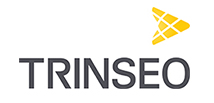The One “Must Do” When Leading Hybrid Work Teams
For as many roles that have been working this way for a number of years, – think information technology for example- there are many roles that have not been.
And this way of leading seems to be throwing a “kink in the works” for many managers.
Various questions arise. Questions such as “How do I build the culture on my team when they are all spread out?” “How do I assimilate new team members that are many miles away from me?” “How do I conduct effective performance discussions, particularly when it includes a “not so positive” piece of feedback ?” “How do I stay connected to what’s going on with each team member?”
But here’s the thing.
Leading remote workers is not some new shiny silver bullet way to manage.
In fact, it has tried and true leadership practices at its core. The challenge is for leaders who already feel completely overwhelmed with things to do and deadlines to meet, it requires more intention and planning to effectively lead these teams.
But there is one core element that remote work teams absolutely depend upon to be successful.
Trust.
It is the key currency when leading people at a distance.
Yes, trust is needed for any work team to be successful. And your first priority as a leader is to build that trust.
Again, not new news.
But…
Without trust, remote teams ABSOLUTELY don’t work. They may limp along but will not be nearly as productive and successful as though who have trust as its core operating procedure.
Trust is the glue. For remote work teams, it is the “Super Glue”.
So how do leaders build trust with team members who don’t sit in the cube right outside their door?
Below are three key actions that leaders can start to do today – no further training required!

1) Focus on building the team community as your #1 priority.
Today’s workers not only crave finding purpose and meaning in their work but they are hungry for connection. Nothing makes a team member that is working at a distance feel more like they belong than when they feel connected.
Find ways to connect with each team member on a regular basis and have it be at a time that’s convenient for them. I had a leader client tell me that because she is intimately familiar with the heavy workload hours and seasons of her directs, she purposely schedules touchpoint meetings at a time convenient for her employees and not during times of key deadlines needing to be met.
And don’t make that conversation all about the work or status updates. Ask meaningful questions such as “Are you getting what you need?” “What is something that you’ve done lately of which you’re really proud either in your personal or work life?” “How else can I support you?”
In our work with hybrid work teams, we encourage them to make working agreements about how they are going to operate. They identify the challenges the team is having in building community and then make commitments to each other to resolve these. Commitment examples include things like agreeing to answer a teammates email within 24 hours. Even if research needs to be done to find out an answer, acknowledging the receipt of the email to another can go a long way to building a sense of community vs. someone feeling like their communication is going into a black hole.

2) Be accessible, responsive and follow through on your commitments.
Accessibility builds connections. In her parable book about the knights of the round table, Virtual Leadership, Jaclyn Kostner tells the story of an employee named Jim who continues to experience lack of response, accessibility and visibility from his co-workers and leaders. This ultimately leads to a breakdown of trust with Jim feeling like he’s not part of the “inner circle” or the round table.
They say a picture is worth a thousand words. The same is true for your behaviors. No action conveys more about level of care for your direct reports or your trust worthiness than doing what you say you are going to do.

3) Provide opportunities for growth and development.
Building on what we know about today’s workers wanting to find meaning and purpose to their work, they also want opportunities provided to learn and develop. They want to be able to be a part of solving complex problems. For many, their drive to do this can overpower their willingness to “put in their dues”. And they will leave your organization if these opportunities are not made available to them.
This doesn’t mean you give a novice a problem to solve for which they have no skills. Rather, find them a buddy/mentor they can shadow and who can help guide them as they learn and grow.
In this time of high attrition, put aside any ego and pride about the younger generation needing to in the time to learn. And instead, work hard to find them those opportunities.
Building trust doesn’t have to take a long time – it can happen quickly if the steps above are implemented.
Please let me know if this is helpful. And weigh in with your own ideas about how to build trust on hybrid work teams.
About Transformation Strategies
Founded by Tricia Steege in 2001, Transformation Strategies is a trusted coaching and consulting firm that assists its clients to realize their desired futures by partnering with them to create comprehensive change strategies and develop their leaders to accomplish real results. We specialize in shifting whole systems at one time by helping our clients think the way the whole system thinks.







